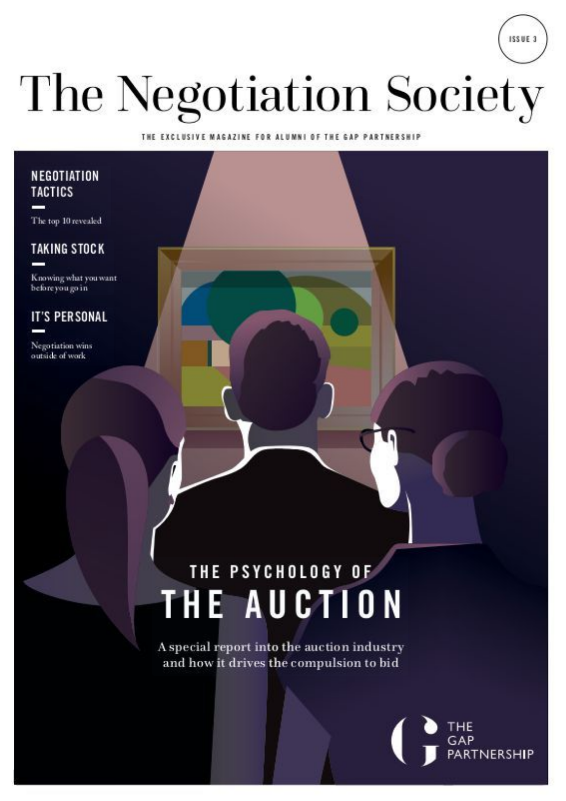Published in, The Negotiation Society, Issue Three, November 2018.
My first semester at the University of Baltimore, I taught masters students the negotiation strategies I had learned from the Harvard Business School and from my decade-long career as a senior global advertising executive. Students enjoyed the lectures, discussions, and simulations.
During individuals meetings and after reading their reflection papers, however, I started to rethink the course. The financial precarity of many of their lives concerned me, causing me to ask myself, what good is it to help people save $5,000 on a car, if they don’t have a retirement account or any savings? That money will disappear in a month.
A deaf student who worked in construction, for example, had no health insurance. Without health insurance in the United States, one broken leg will eat up anything saved in a car negotiation. His vulnerability put him as well as his loved ones at great financial risk. Students also did not understand the nature of school loans. In the United States, even personal bankruptcy cannot free one from these loans. People can be haunted by them their entire lives.
Knowing many students had taken on these loans to be in my classes, I felt a responsibility to help them find a way out of debt.
Taking Stock as Preparation
Over the winter break, I quickly redesigned the course. Now early in the semester, we talk about building a strong financial ship. Students figure out their net worth, which requires calculating their credit card debt, home loans, etc. They also look at their retirement plan and think about their health coverage. Then, a financial advisor speaks to the class about financial basics and explains the difference between a fiduciary and a stockbroker, the former being required by law to make decisions which serve the client before themselves.
This ought to be the first step in any negotiation class. You have to first know what you have.
Adding this personal financial component to the class had immediate results. One student turned down a job offer promising her an easier commute and greater vacation time. She said no because the salary would not be enough to pay off her school loans while also covering her monthly expenses. She said learning about the loans helped her make this decision.
The idea of preparation is a standard in any negotiation book or seminar. By “preparation” the negotiation experts mean taking time to figure out what you are willing to pay, your alternatives and your counterpart’s interests and alternatives. What many negotiation resources neglect to discuss is how you know. You need to know where you are and where you are going.
This is as true for companies as it is for individuals. When salespeople understand, for example, their company’s operating costs, they can feel more confident when negotiating with potential customers.
Negotiating helps you cover your costs while securing money to invest in your future. So, how do you know your future?
Knowing what you really want
The course now adds a second component to “preparation” rarely addressed deeply in negotiation classes. Course participants spend time clarifying not only what they want, but why they want it. When they think about the why they consider how the acquired object or resource will contribute to their lives. Unless grounded in what matters most to us, we can too easily find ourselves in caught up in ego-based negotiations in which we try to capture more of whatever happens to be on the table, whether or not we really want it.
Getting to Yes with Yourself, negotiation guru William Ury’s latest book, talks about the importance of taking time for this introspection.[1] After decades of helping people acquire what they thought they wanted, only to find they still were not happy, inspired him to write this book. He now urges political leaders, business owners and individuals to really stop and think about what fulfills them.
Students like Ury’s book, but often tell me they need more help figuring out exactly what they want. A decade working in advertising, helped me understand how marketers work to tell people what they should want. Few can be totally immune to how culture and marketing shapes us, but we can stop and consider the kinds of messages we receive.
People receive far more marketing messages, for example, to acquire something new than to say, pay off their debt. In January 2018, Experian estimated the average American carries at least $6,375 in credit card debt. This is a 3% increase from 2017.[2] With a U.S. national average of 17% interest on these loans, many folks can barely pay off the interest each month. But people continue to buy. Advertising encourages consumers to that whatever they are selling will be worth the expense. At the very least the new acquisition can be distraction from the uncomfortable feeling of the debt at their heels.
One of our students described well the trap of consumption,
“I used to spend my money buying all these fancy things to impress my friends. Then I became annoyed they did not come over very often and when they did they did not seem sufficiently impressed with what I acquired. I worked all week earning money to acquire possessions I spent my weekends taking care of. Eventually, I cleaned it all out and started taking care of myself.”
It might be a shock to accept that our ‘wants’ may actually not even be our own. How do we know if what want came from ourselves or was planted in our minds by advertisers, parents, colleagues, our religious community or even by a business competitor? In class we do some of the difficult work of disentangling that. I remind students of psychoanalyst Carl Jung’s profound observation,“Nothing has a stronger influence psychologically on their environment and especially on their children than the unlived life of the parent.”
Yes, we go deep. But by thinking critically about what influences us, we have a better chance of being fulfilled when we succeed.
So now, in addition to thinking about their financial situation, students also write an essay about what they want and why they want it. They continue to think about and refine their goals throughout the semester. Their efforts culminate in the last class which is held in my home. Their final assignment is to prepare for and attend a “Come As You Will Be” party. Students come as they will be in five years, dressing up and bringing props like business cards, book covers, and wedding rings. They try to stay in character for four hours and ask each other questions about their personal and professional lives. Students have created fascinating consulting companies, talked about their improved health and shared funny stories about their children, partner and homes. The goals is to be as convincing as possible.
This celebratory event can be challenging because it puts everyone back into the driver seat of their own lives and disrupts the unconscious chasing of something “out there” that will presumably increase their happiness.
While this discussion has largely been about individuals, the same strategies are useful in business or in politics. Businesses also need to know who they are and what matters most to them. “Money” as a single answer is a lazy and will not be enough to inspire the best out of employees. This is why some companies invest so much time in quality mission statements.
A salad shop, sweetgreen, has the mission to “inspire healthier communities by connecting people to real food.” Patagonia, an outdoor equipment and clothing company, goes even further with mission to “build the best product, cause no unnecessary harm, use business to inspire and implement solutions to the environmental crisis.”
These are goals big enough to inspire employees of all levels to move through the occasional drudgery of the day-to-day of production and delivery of their products. Notice that being wealthy and number one were not the mission; they may be the outcome of fulfilling their mission, but it is not the primary goal. Without being grounded in a deep knowing of who they are and what they want it, businesses may find themselves mindlessly pursuing the competitor which can lead them in the wrong direction. Business leaders can miss untapped markets when too focused on capturing their competitor’s clients. Additionally, focusing solely on beating the competitor can distract from creating innovative solutions, leading companies to be effectively knock-offs of one another.
A simply sailing metaphor can help negotiators get on the right track. Know the status of your vessel and be clear about the destination. Then, use negotiation tactics to move you swiftly along your way.
[1] Ury, William. Getting to Yes with Yourself: (And Other Worthy Opponents). HarperCollins, 2015.
[2] Dickler, Jessica. “Credit card debt hits a record high. It’s time to make a payoff plan.” CNBC.com Published January 23, 2018. Accessed August 28, 2018.
Irene VII



